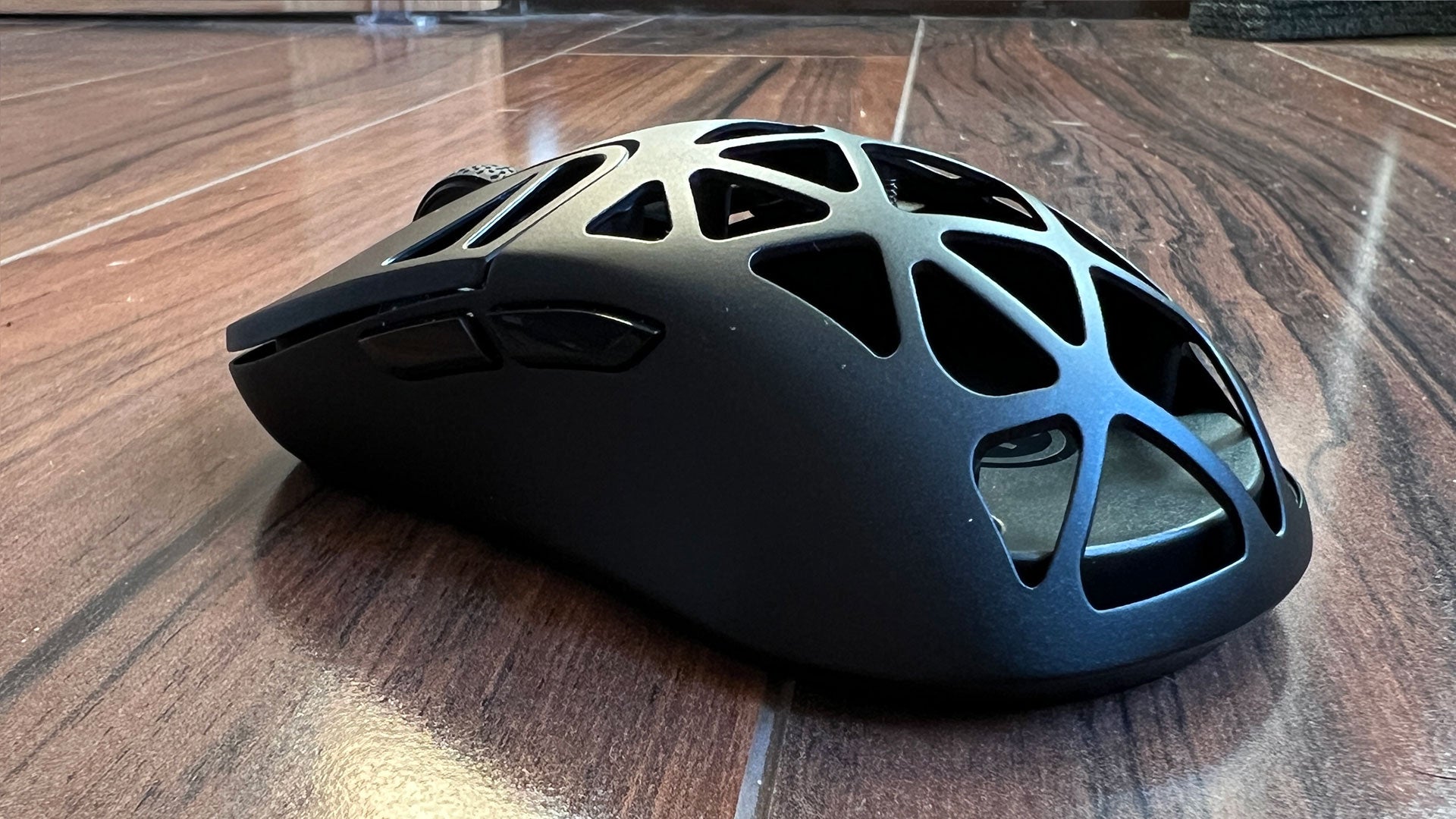Verdict
Thanks to a cold metal body, this version of the Keychron M3 Mini stands out against a sea of equally competitive plastic pointers. Its attractive price point sets it apart, but its cute 4K receiver can prove problematic.
Pros
- Feels and looks great
- Wonderful battery life
- Strong FPS performance
Cons
- Lower priced competition
- Wireless receiver is gimmicky and prone to interference
-
Gaming-grade sensor The PixArt 3395 brings important 4000Hz polling to those who demand utmost precision. -
Magnesium alloy chassisSwapping plastic for metal, this version of the Keychron M3 Mini 4K is cool to the touch and built like a brick. -
Wireless4k polling is limited to 2.4Ghz, but Bluetooth 5.1 support can save battery life and improve its portability.
Introduction
If there’s one way to make your gaming mouse stand out in a handsy crowd, it’s to make it out of metal. The Keychron M3 Mini (Metal Edition) feels stellar and sticks to recent design trends, cementing it as a genuine option for those looking to break away from the bigger known gaming brands.
Though not exactly small compared to some of the company’s more immediately portable offerings, raising questions about its already confusing (and seldom solid) naming, this enduring clicker should stand the test of time.
Pricing could be a little more aggressive, which is usually Keychron’s main forte as an alternative peripheral vendor, but even at £99, it’s relatively competitive against other hyper-responsive mice – you’re just paying a premium for the feel of the magnesium alloy against your skin.
Design
- Cool magnesium alloy chassis
- Abstract triangular perforations
- Right-hand design with slim side buttons
The Keychron M3 Mini (Metal Edition) follows in the footsteps of the ultra-lightweight gaming mouse craze of a few years ago. If you don’t like holes, turn back now.
To keep it from feeling too heavy under your hand, the magnesium alloy chassis is aggressively perforated around where your palm sits, with a couple more of these breathing holes stretching down the main buttons to meet the tops of your fingers.
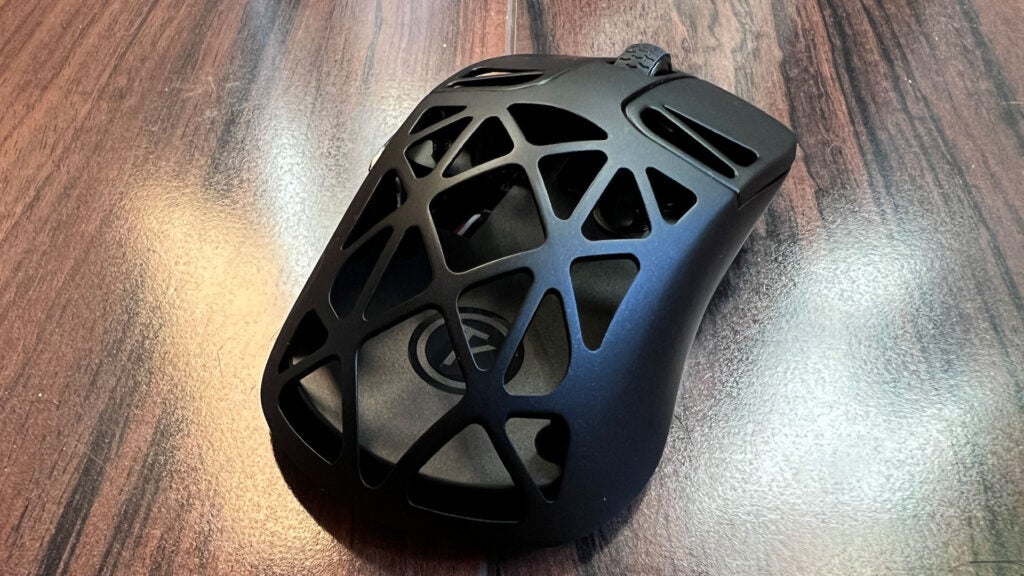
Ditching the popular honeycomb approach, Keychron has gone with a more modern-looking large triangle cutout, allowing it to keep some straight lines for structural integrity. Paired with the naturally cool-to-the-touch metal shell, the Keychron M3 Mini (Metal Edition) is comfortable to use for long periods and downright refreshing in warmer climes.
It’s relatively low-profile, suiting more of a claw grip than a palm grip, placing it firmly in the crosshairs of the tactical FPS aficionado. There’s no high back to welcome larger hands, and despite being symmetrical, it’s right-hand use only, with its twin side buttons sitting on the left side only.
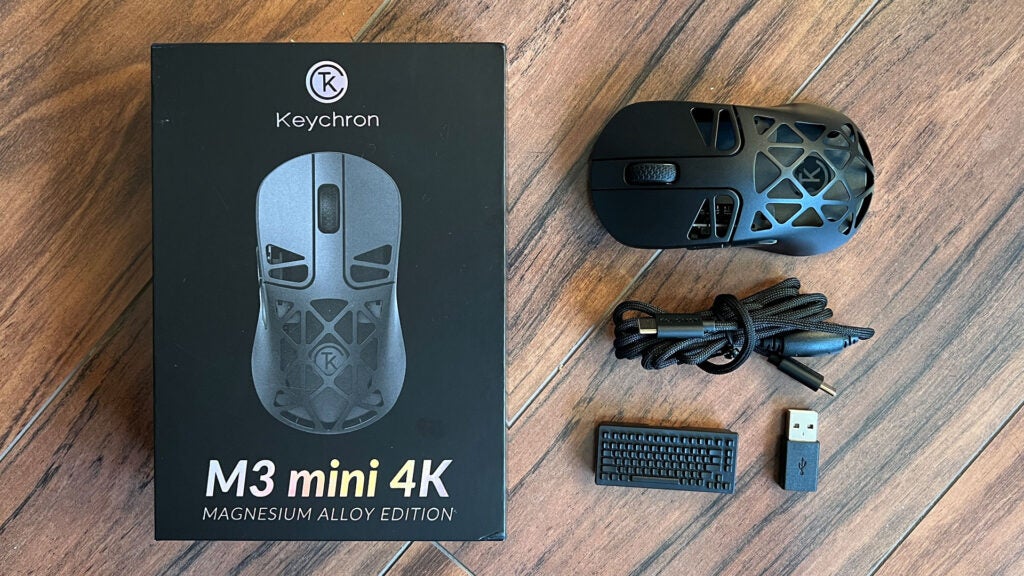
You won’t even find a dedicated DPI toggle behind the mouse wheel here. On-device controls are managed underneath, where you’ll find buttons to toggle polling rate, DPI, and a switch for changing between wired, 2.4Ghz, and Bluetooth connectivity.
The front features a recessed USB-C port for charging and wired use, and the snappy 2.4Ghz wireless connectivity is handled through a cute – if bulky – receiver shaped like a keyboard. The unorthodox design means you need to use the cable.
The 1000Hz version of the non-metal version comes with a more suitable slimline USB-C receiver, suggesting the larger body is needed for the 4K-enabling tech. This tracks given the size of Razer’s Hyperspeed dongle, but that one can allow compatible mice to ride up to 8K polling. If diminished portability and extra cable clutter is acceptable to you, it’s a non-issue.
In terms of packaging, Keychron doesn’t overdo it. The simple black cardboard sleeve isn’t unnecessarily large, but we would like to see the fitted foam swapped out for stable cardboard inserts for easy recycling.
Performance
- Interference-prone bulky receiver
- 4k polling limited to wireless connectivity
- Swift and snappy when stable
Sporting a PixArt 3395 – the same gaming-grade tracker found in Keychron’s productivity-focused M6 mouse – there’s little reason to doubt the performance of the Keychron M3 Mini 4K. In practice, that’s not the case.
The working week was made just that little bit harder with this clicker at the desk. Far too often the cursor simply stops partway through a movement, suggesting a lost connection. The issue only lasts for a second or two at best, but it was consistent in my week with the mouse, with drop-outs happening several times a minute at its worst in 2.4Ghz mode.
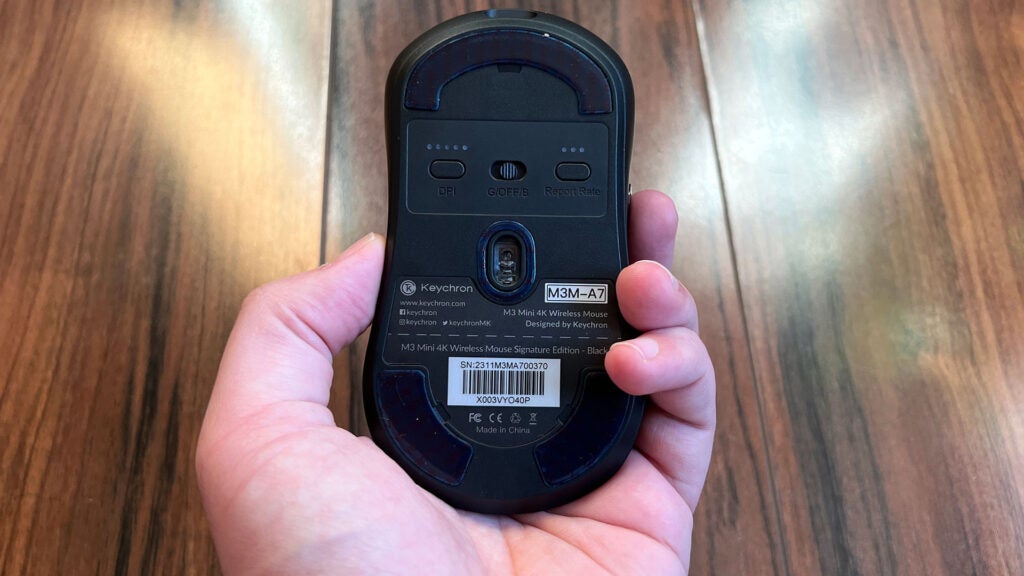
Wireless connectivity has always come at the risk of interference. Still, in testing another wireless keyboard at the same time using two different receivers in the same USB hub, only the Keychron ever kicked up a fuss. Everyone’s situation is different. You could avoid the issue entirely without trying. But having to change my whole setup to get a bulky receiver to play ball did leave a sour taste in my mouth.
Wireless connectivity or interference is an issue I haven’t had since using the Razer Naga Epic Wireless. And I’ve tested some of the best wireless gaming mice around for years now under the same conditions. Given how large the receiver is, it’s hard not to be disappointed. It’s cumbersome, requires a cable, and is less reliable.
After making a few changes to get the Keychron M3 Mini Wireless (Metal Edition) connected for good, the experience was solid. Its 4K polling rate isn’t something I’m likely to benefit from with my 1440p monitor capped at just 100Hz (thanks, Govee AI Sync Box), but it certainly will if you game at higher resolutions and refresh rates and need to keep that competitive edge.
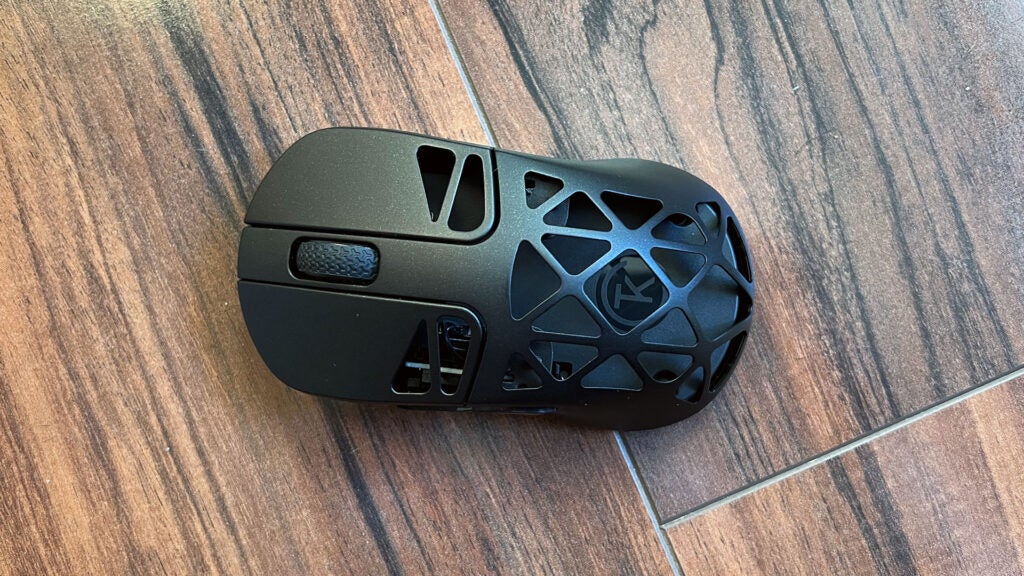
The metallic touch to each hairline click from the Huano micro switches feels fantastic, short, and snappy. The same can be said about the side buttons, but larger hands might find them too small.
An impressive 64g of weight keeps it gliding well on most surfaces, the PFTE feet are generously large, and the slight texture to the grip – paired with the natural resistance of the perforations – keeps this weapon from sliding out from under you.
The left side is smooth rather than textured like the plastic models. That’s also where the Logitech G Pro Superlight 2 falls short at twice the price. The magnesium alloy body means there’s virtually no flex, so you don’t need to worry about a tight grip slowly wearing it down, but it would have been nice to see the textured side of the plastic model carry over here.
Though you shouldn’t have much trouble with the battery running dry without having a cable on hand, you can theoretically stretch its reported 135-hour lifespan by dropping the polling rate down depending on your task. If you’re just getting work done in the office, a Bluetooth connection at 125Hz will easily see you through the day on a near-empty tank without any serious drawbacks.
Software and Lighting
- Simple, clean software suite
- No RGB lighting
- Precise DPI settings, wide polling rate choices, lift distance, and more
When it comes to lighting, the Keychron M3 Mini – Metal Edition doesn’t fit the bill. Aside from a basic indicator you’ll spot through the perforations, it isn’t a glowy RGB monster out to unify your setup with a wave of colour.
Toggling performance parameters isn’t down to just the buttons underneath, though. The Keychron Engine software will recognize this clicker just fine, opening up profiles you can manage on-device thereafter.
All the good stuff like custom DPI stages, polling rate, angle snapping, and lift distance are there. Windows 11 still doesn’t take kindly to the download, with even Chrome’s antivirus efforts attempting to thwart the process.
Latest deals
Should you buy it?
You want a competitive-grade mouse with a unique feel
The magnesium alloy shell is the main allure of this clicker. If you’re willing to pay for the privilege and don’t have too many other interfering wireless peripherals around, you’ll be happy with this one.
You don’t want to risk a spotty wireless connection
Though few gaming mice lose anything with a modern 2.4Ghz wireless connection, the Keychron M3 Mini’s receiver skirts convention with its bewildering shape and size and performs worse in fringe cases.
Final Thoughts
Rocking a 4k sensor, the Keychron M3 Mini competes cleanly with the top-performing FPS gaming mice out there. It clears the 2K sensor of the Logitech G Pro X Superlight 2, but it won’t climb nearly as high as the Razer Viper V3 Hyperspeed or other mice compatible with the extra dongle. You have to choose between a built-in battery or a disposable AA with that fight, however. Razer’s offering is also considerably heavier.
At just shy of £99, you can get most of what the Keychron M3 Mini offers at a lower price elsewhere. It just won’t be as sturdy. Want to shave a bit of weight and save some cash? You can’t get much better than the HyperX Pulsefire Haste 2 for the money. There’s a cable, but you won’t feel it.
If you’re still deliberating, check out our roundup of the best gaming mouse of 2024. And if wireless is an absolute must, the Asus ROG Harpe Ace Aim Lab Edition claimed the gaming spot on our list of the best wireless mice recently. Unlike Keychron, it’s often discounted and frequently in stock.
How we test
We use every mouse we test for at least a week. During that time, we’ll check it for ease of use and put it through its paces by playing a variety of different genres, including FPS, strategy and MOBAs.
We also check each mouse’s software to see how easy it is to customise and set up.
Used as a main mouse for over a weekUsed as a main mouse for over a week
Tested performance on a variety of games
FAQs
No, wired use locks the Keychron M3 Mini 4K to a 1000Hz polling rate.
The receiver uses a female USB-C port. It needs a male-to-male cable to connect to a USB port, but an included adapter allows for USB-C or USB-A support.



















